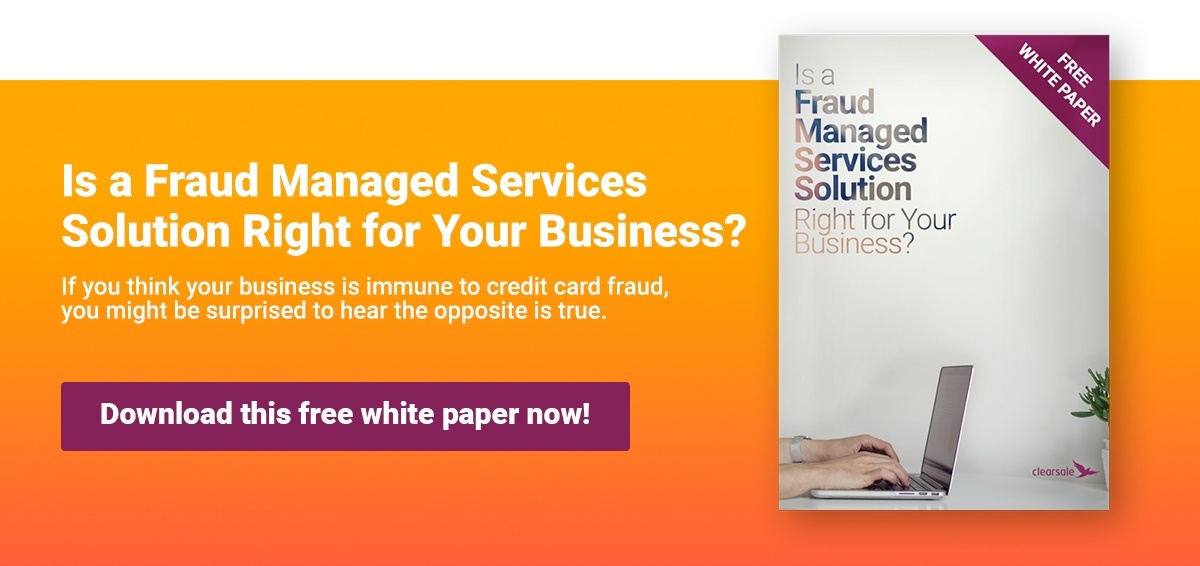Merchants Beware: These 15 Red Flags Signal Potential Credit Card Fraud
E-commerce makes it easy for customers to get the products they want when they want them. Unfortunately, card-not-present (CNP) transactions also make it easier for criminals to commit credit card fraud — and it’s hurting businesses in more ways than one.
The average merchant experiences 156 successful fraudulent transactions monthly, with the average transaction value being $114. And because the cost of fraud is more than just the cost of lost merchandise — it also includes lost profits, bank fees and chargeback costs — losses add up quickly.
To prevent a hit to their bottom line, merchants must be aware of the top, but often subtle, red flags for fraudulent transactions:
Out-of-the-Ordinary Orders
- Unusually large orders. Transactions with a higher-than-average dollar value are worth another look. Because criminals have a short amount of time in which to use a stolen card, they want to buy as much as they can, as quickly as they can.
- Purchase of multiple high-priced items. Fraudsters want to maximize the dollar value of stolen merchandise, which is why they often purchase several of the same high-priced goods, sometimes in varying sizes or colors.
- Nonmatching order data. If orders have billing and shipping addresses that don’t match, multiple shipping addresses that share a single billing address or ZIP codes that don’t match telephone area codes, merchants could be dealing with fraudsters.
Credit Card Issues
- Multiple credit cards. Most Americans own just 6 credit cards, so be wary of a customer account or IP address that’s associated with a significantly greater number of credit cards.
- Multiple small charges. Thieves sometimes test the validity of a credit card number by placing small orders. If they go through, fraudsters know they have a valid card and will attempt larger purchases.
- Numerous orders shipping to the same address but using different credit cards. Thieves may be working from one location using multiple stolen cards, meaning merchants should be wary of this type of transaction.
- Several orders shipping to different addresses but using the same card. Fraudsters often work in teams, shipping fraudulently purchased items to different locations.
- Numerous orders placed on similar card numbers. Fraudsters may have stolen lists of credit card numbers from a bank to place fraudulent orders, and merchants should be on the lookout for multiple orders from similar card numbers.
Transaction Difficulties
- Inability to provide or confirm personal data. Customers who are unable to quickly provide standard customer data, such as shipping addresses and card expiration dates, may, in fact, be fraudsters.
- Suspicious email addresses. Many fraudulent orders come from suspicious-looking email addresses from free services like Yahoo or Google. Because anyone can open these accounts without providing legitimate personal data, thieves can easily hide behind untraceable emails.
Shipping Requests
- Delivery to nonstreet addresses. It’s virtually impossible to verify the recipient of a package sent to a PO box or an office building, which is why many fraudsters use this type of address for purchases.
- Rush shipping on high-value purchases. Fraudsters want that jewelry or computer in their hands ASAP – before the cardholder realizes something is amiss – so they often pay extra for overnight shipping.
- In-store pickup. For fraudsters with a stolen credit card, in-store pickup eliminates the red flags associated with differing shipping and billing addresses.
- International shipping. Shipping overseas is expensive for merchants, and fraudsters know it. Be wary of customers who offer to “help” defray shipping costs by recommending reshippers as these are often nothing more than a laundering operation.
- Package rerouting. After fraudsters place an order (generally with the cardholder’s legitimate data), they quickly contact customer service to change the shipping address. This tactic lets the thief bypass the security measures that flag orders with different shipping and billing addresses.
Although not all these red-flag transactions will turn out to be fraudulent, they’re important reminders to merchants to keep a vigilant eye on their online sales.
An outsourced fraud protection solution helps merchants do just this by thoroughly analyzing each transaction — detecting instances of fraud that simple filters or busy analysts can’t catch on their own. Successful fraud detection relies on a solution that can see the big picture; without it, merchants risk leaving credit card fraud unchecked and damaging their bottom line.
When it comes to integrating a fraud protection solution into your e-commerce environment, you must ensure you’re selecting a comprehensive solution that can identify even the most subtle indicators of fraud. Talk with a ClearSale credit card fraud analyst today to learn how ClearSale’s multilayered approach can help you increase approval rates, protect against chargebacks and prevent fraud attacks.
 Bruno Farinelli
Bruno Farinelli